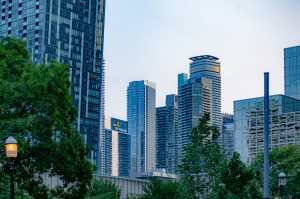Solar Communities: Suburbs Going Off-Grid in 2024
Solar energy is becoming an increasingly popular choice for powering homes and businesses, as individuals are becoming more conscious of their environmental impact and seeking alternative energy options. In 2024, we can expect to see the rise of solar communities in suburban areas, as more and more neighborhoods make the transition to going off-grid. This shift represents a significant step towards a more sustainable future and a cleaner, greener planet. In this article, we will explore the growing trend of solar communities and the impact it will have on our suburban landscapes.
The Benefits of Solar Communities
Solar communities are residential areas that are designed to rely primarily on solar energy as their main source of power. These communities use solar panels to harness and store energy from the sun, which can then be used to power homes, businesses, and other infrastructure. There are numerous benefits to these solar communities, both for individuals and the environment.
1. Cost Savings
One of the most significant advantages of living in a solar community is the potential for cost savings. By using solar energy, homeowners can significantly reduce their monthly utility bills, as they are no longer reliant on traditional, more expensive sources of power. Additionally, solar communities often have access to government incentives and rebates that further reduce the cost of installation and maintenance of solar panels.
2. Environmental Impact
The use of solar energy has a significantly lower impact on the environment compared to traditional methods of generating electricity. Solar energy is a clean and renewable source of energy, meaning it does not emit harmful pollutants into the air or contribute to climate change. By switching to solar energy, homeowners in solar communities can significantly reduce their carbon footprint and help create a more sustainable future.
3. Community Bonding
Solar communities often have a strong sense of community, with residents coming together to support each other’s sustainable living efforts. The shared goal of reducing their environmental impact creates a sense of camaraderie and can lead to community events and initiatives focused on sustainability. This community bonding not only fosters a sense of belonging but also contributes to a more sustainable lifestyle for the neighborhood as a whole.
The Future of Suburban Living
The rise of solar communities in suburbs is a sign of a broader shift towards more sustainable and eco-friendly living. As these communities continue to grow, we can expect to see a significant impact on suburban living in the coming years.
1. Increased Reliance on Renewable Energy
The growth of solar communities in suburbs will contribute to a more extensive reliance on renewable energy sources, such as solar, wind, and hydro power. As more neighborhoods make the transition to solar energy, it will become a more mainstream and widely accepted alternative to traditional energy sources.
2. Change in Urban Planning and Land Use
The rise of solar communities will also lead to a change in how suburban areas are planned and developed. With an increased focus on renewable energy, we may see the incorporation of solar panels into the design of new homes and buildings. This shift will also lead to a reduction in the amount of land needed for traditional power plants, freeing up more space for residential and recreational areas.
3. Greater Awareness and Education on Sustainability
As solar communities continue to grow and gain recognition, they will also raise awareness and educate communities on the benefits of sustainable living. The incorporation of solar energy into suburban areas will serve as a visible reminder of the power and importance of renewable energy sources, encouraging individuals to make more environmentally conscious decisions.
Conclusion
The future of suburban living is shining bright with the growth of solar communities. These communities offer a host of benefits for individuals, the environment, and the community as a whole. We can expect to see an increased reliance on renewable energy sources, changes in urban planning, and greater awareness and education on sustainability as solar communities continue to expand. So, let’s embrace this shift towards a more sustainable future and go off-grid in 2024.











